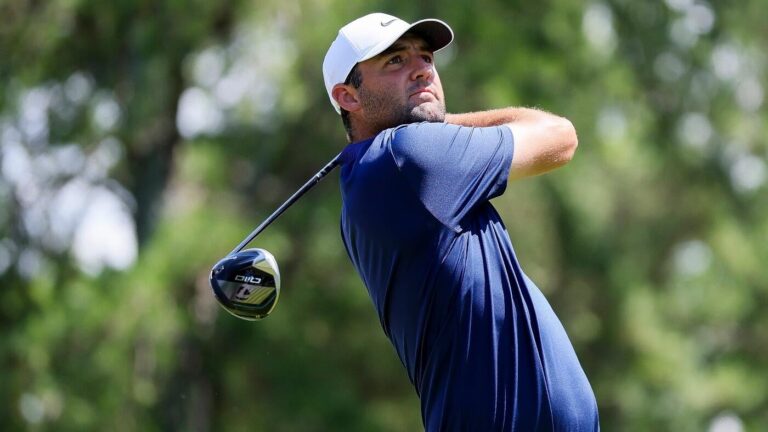Rory McIlroy did not have the week he wanted at Quail Hollow. The 2025 PGA Championship co-favorite at 5-1 failed to factor into the conversation on the weekend, sputtering to a 3 over finish. That effort came after reportedly needing to rely in a new driver after his standard driver failed USGA driver testing earlier in the week.
McIlroy did not speak with the media after any of his rounds, so there has been no confirmation about the status of his driver, but either way, it was not a malicious effort from McIlroy to play with what was deemed illegal equipment. The USGA performs weekly tests to ensure players’ driver faces haven’t worn too thin over the course of normal use, making them springier and “hotter.”
The problem is that there is little in the way of transparency about the testing, and only a third of the field is subjected to the random inspections each week. That was highlighted by the statement provided by the PGA of America, which confirmed testing occurred pointed to the report being the problem and not the inspection itself.
Xander Schauffele, who previously had his driver fail testing before the 2019 Open Championship, poured more fuel on the fire this subject has created. Playing alongside McIlroy and Scottie Scheffler in the first two rounds, Schaufele pointed out Sunday that McIlroy wasn’t the only top star who had to make a change, suggesting Scheffler also used a backdrop driver this week
“I think Scott is winning the tournament, and I think he switched to his backup, too,” said Schauffele, according to Golfweek.
When it was pointed out to Schauffele that he had just divulged new information, he responded: “See, you don’t even know because he’s so good. We can deal with it because the [equipment] reps are so good now.”
Scheffler on Sunday confirmed this occurred at the onset of the week, laughing off the idea that some wayward tee shots on the front nine of his final round — ahead of his five-shot PGA Championship victory — were the fault of a new tool in the bag.
“No, that was my fault,” he said. “The driver testing is something that happens regularly on Tour. My driver did fail me this week. We had a feeling that it was goin to be coming because I’ve used that driver for over a year. I was kind of fortunate for it to last that long, I felt like.
“I would argue that, if we’re going to test drivers, we need to be even more robust in the way we test them. That was a conversation I had with one of the rules officials. If it’s something we’re going to take seriously, I feel like we’re almost going halfway with it right now.”
Schauffele and Scheffler agree that the main issue with the USGA’s testing procedure is not that golfers may need to change out their drivers — the equipment they have is so consistent they can make that switch rather seamlessly — but that it doesn’t actually solve the problem because it doesn’t impact everyone equally in the tournament.
“Do it to everybody, not just a third of the guys,” Schauffele said. “If a player has a hot driver, they’re still playing the tournament. Just my take.”
Scheffler added: “If we’re going to test only a third of the field, if we’re going to do it right, leave it up to us as players, like the rest of the rules in the game of golf are. … If we’re going to do it, we might as well do it right, get more robust and get even more strict. You can test guys every week, if you want. I mean, there’s no reason why we shouldn’t.”
While the gripes about mud balls from early in the week can be written off as a frustrated player complaining about a situation that can impact everyone, it’s a strange move by the USGA to selectively test a portion of the drivers being played any given week. If the goal is to make sure everyone is following the rules, everyone needs to be tested. Otherwise, you aren’t doing anything but putting some players at a potential disadvantage.
The real issue for players having their gamers pulled the week of a tournament isn’t so much the physical properties of a new driver but the mental hurdle of having to put a new club in play. Even when it’s the same model and specs, all it takes is just a little bit of uncertainty to impact their play. It’s not all that different from the mud ball talk, where the uncertainty was the big challenge for players, but at least that impacts everyone and isn’t just something a third of the field has to worry about.
